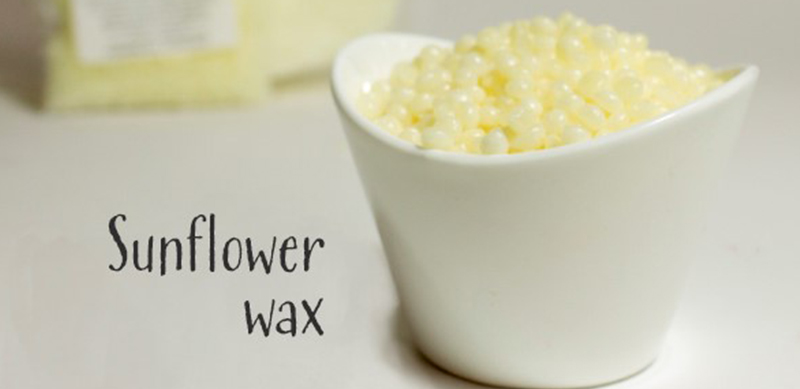What are Organic Pigments and Dyes?
What are Organic Colorants? . . . How about I start by explaining what they are NOT.
I get lots of queries from well-meaning customers who want to make their products with only organic ingredients. They want to make sure they only purchase natural, organic pigments from TKB Trading! "No," I explain to them "You really don't!"
The confusion comes from the use of the word "organic".
In the natural products world, "organic" refers to agricultural products (like fruits, veggies, oils, etc), which have been produced in a sustainable system of farming without the use of pesticides, herbicides and fertilizers. (here is a hyperlink which defines organic: http://www.organic-ingredients.com/Organic/faq.html#faq1)
Agricultural products can definitely be used to color things (example: blackberry juice is great at staining your shirt), so you could definitely use certified-organic color additives in non-cosmetic products such as soap or potpourri.
However, only three agricultural products are approved by the US FDA for use in coloring cosmetics. So there are only three things which you might use in your cosmetic products which you could might be able to source as being certified organic: annatto (a yellow dye), caramel (brown dye from sugar), carotene (yellow/orange as from carrots). I'm not even sure if these are available in a certified organic format. There is one other natural ingredient use in cosmetics which is approved by the FDA, and that is carmine. Carmine is a red dye made from squished insects. I have no idea if there is an organic bug farm out there, but I kind of doubt it.
The rest of the color additives used in cosmetic products are generally synthetic dyes or pigments. And here is where the confusion sets in. In the world of color chemistry, we speak of colors as being either "organic" in origin or "inorganic" in origin. The use of the word organic has an entirely different meaning than the one discussed above
In science, "organic" colors are simply colors which are "compounds which contain carbon". Most of the organic colors used in cosmetics are exactly those colors that the naturalists try to avoid. For example, the FD&C and D&C dyes are "organic" dyes; but they are also considered irritants and allergens by natural cosmetic manufacturers.
Inorganic colors are colors which don't contain carbon. For example, all those lovely minerals which natural cosmetic manufacturers like to tout in their natural mineral makeup products -- these are all inorganic color additives.
If this has confused you even more, email me! I'll take another stab at it.
Be sure to visit our site at www.wholesalecolors.com (or www.tkbtrading.com).
I get lots of queries from well-meaning customers who want to make their products with only organic ingredients. They want to make sure they only purchase natural, organic pigments from TKB Trading! "No," I explain to them "You really don't!"
The confusion comes from the use of the word "organic".
In the natural products world, "organic" refers to agricultural products (like fruits, veggies, oils, etc), which have been produced in a sustainable system of farming without the use of pesticides, herbicides and fertilizers. (here is a hyperlink which defines organic: http://www.organic-ingredients.com/Organic/faq.html#faq1)
Agricultural products can definitely be used to color things (example: blackberry juice is great at staining your shirt), so you could definitely use certified-organic color additives in non-cosmetic products such as soap or potpourri.
However, only three agricultural products are approved by the US FDA for use in coloring cosmetics. So there are only three things which you might use in your cosmetic products which you could might be able to source as being certified organic: annatto (a yellow dye), caramel (brown dye from sugar), carotene (yellow/orange as from carrots). I'm not even sure if these are available in a certified organic format. There is one other natural ingredient use in cosmetics which is approved by the FDA, and that is carmine. Carmine is a red dye made from squished insects. I have no idea if there is an organic bug farm out there, but I kind of doubt it.
The rest of the color additives used in cosmetic products are generally synthetic dyes or pigments. And here is where the confusion sets in. In the world of color chemistry, we speak of colors as being either "organic" in origin or "inorganic" in origin. The use of the word organic has an entirely different meaning than the one discussed above
In science, "organic" colors are simply colors which are "compounds which contain carbon". Most of the organic colors used in cosmetics are exactly those colors that the naturalists try to avoid. For example, the FD&C and D&C dyes are "organic" dyes; but they are also considered irritants and allergens by natural cosmetic manufacturers.
Inorganic colors are colors which don't contain carbon. For example, all those lovely minerals which natural cosmetic manufacturers like to tout in their natural mineral makeup products -- these are all inorganic color additives.
If this has confused you even more, email me! I'll take another stab at it.
Be sure to visit our site at www.wholesalecolors.com (or www.tkbtrading.com).

Comments